
How to Use LiFePo 12V Battery: Examples, Pinouts, and Specs
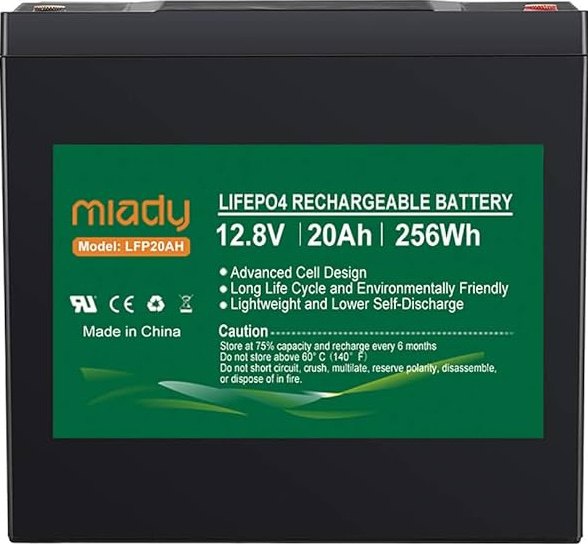
 Design with LiFePo 12V Battery in Cirkit Designer
Design with LiFePo 12V Battery in Cirkit DesignerIntroduction
The LiFePo 12V Battery is a lithium iron phosphate battery designed to deliver a stable 12V output. Known for its exceptional safety, long cycle life, and thermal stability, this battery is a reliable power source for a wide range of applications. Its robust design and high energy density make it ideal for use in electric vehicles, renewable energy storage systems, uninterruptible power supplies (UPS), and portable electronics.
Explore Projects Built with LiFePo 12V Battery
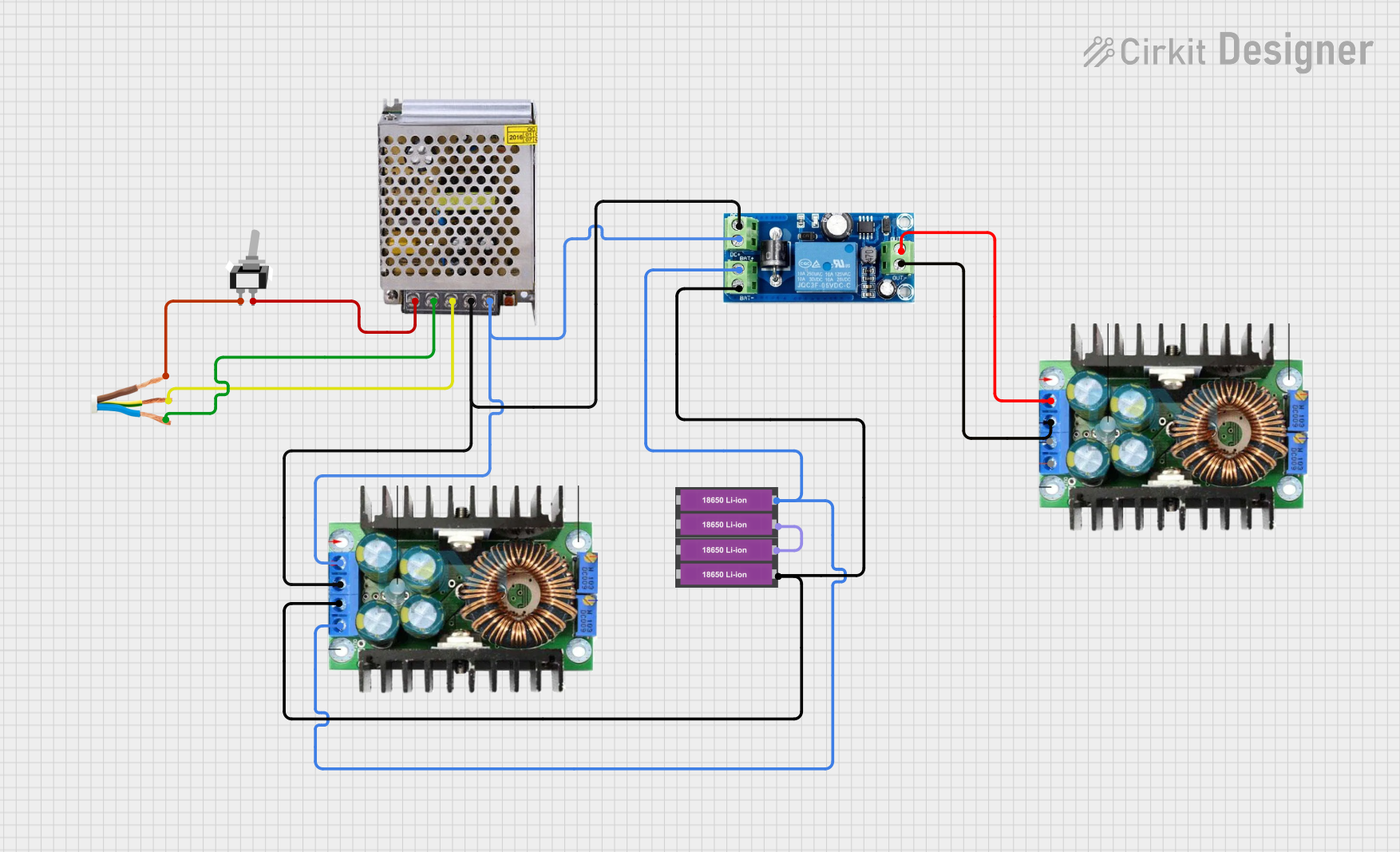
 Open Project in Cirkit Designer
Open Project in Cirkit Designer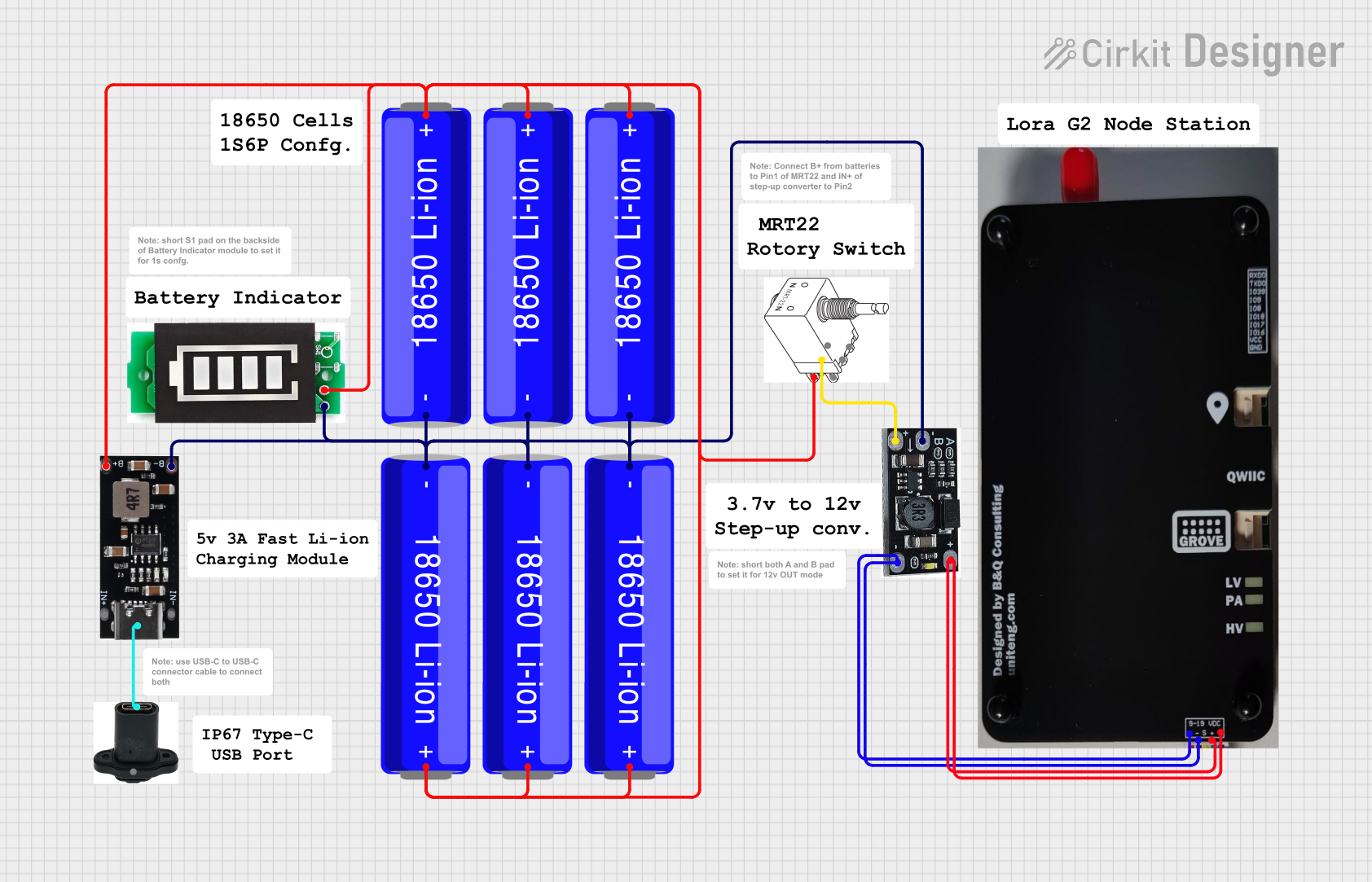
 Open Project in Cirkit Designer
Open Project in Cirkit Designer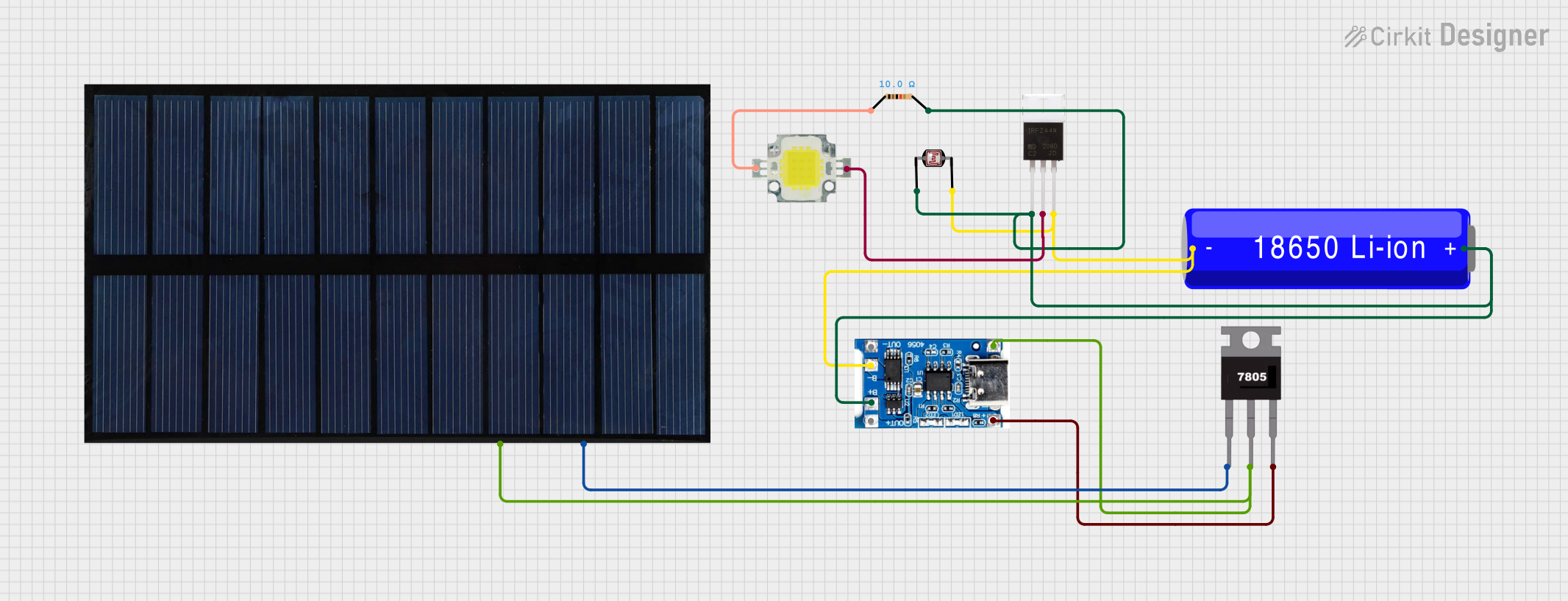
 Open Project in Cirkit Designer
Open Project in Cirkit Designer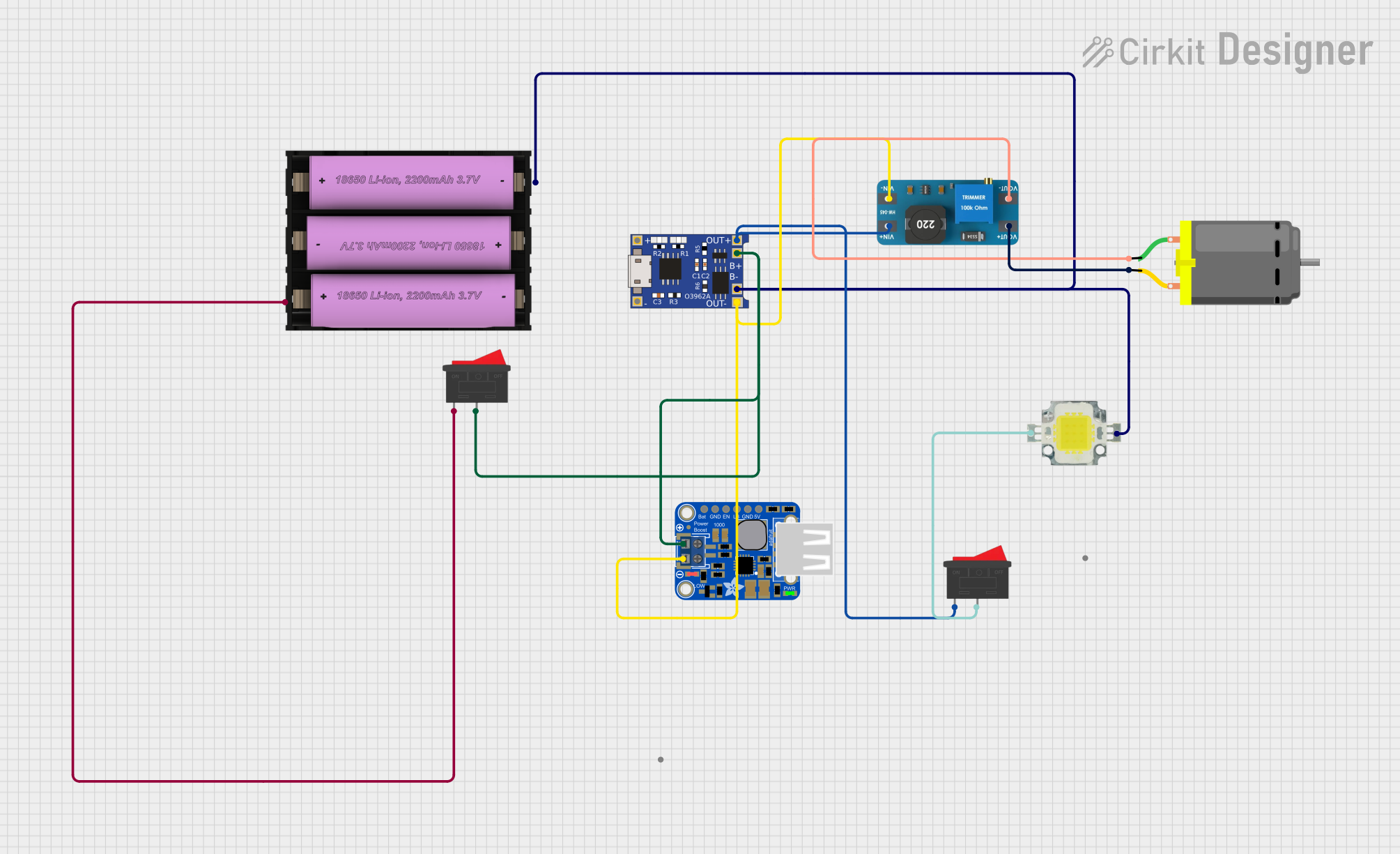
 Open Project in Cirkit Designer
Open Project in Cirkit DesignerExplore Projects Built with LiFePo 12V Battery

 Open Project in Cirkit Designer
Open Project in Cirkit Designer
 Open Project in Cirkit Designer
Open Project in Cirkit Designer
 Open Project in Cirkit Designer
Open Project in Cirkit Designer
 Open Project in Cirkit Designer
Open Project in Cirkit DesignerCommon Applications:
- Electric vehicles (EVs) and hybrid vehicles
- Solar energy storage systems
- Backup power supplies (UPS)
- Robotics and IoT devices
- Marine and RV power systems
Technical Specifications
Below are the key technical details of the LiFePo 12V Battery:
| Parameter | Value |
|---|---|
| Nominal Voltage | 12.8V |
| Nominal Capacity | 10Ah, 20Ah, 50Ah, or higher (varies by model) |
| Maximum Charge Voltage | 14.6V |
| Discharge Cut-off Voltage | 10.0V |
| Maximum Continuous Current | 20A to 100A (model-dependent) |
| Peak Discharge Current | 2x maximum continuous current (for 10 seconds) |
| Cycle Life | >2000 cycles at 80% Depth of Discharge (DoD) |
| Operating Temperature | -20°C to 60°C (discharge), 0°C to 45°C (charge) |
| Weight | Varies by capacity (e.g., ~1.2kg for 10Ah) |
| Dimensions | Varies by model (e.g., 151x65x95mm for 10Ah) |
| Internal Protection | Built-in Battery Management System (BMS) |
Pin Configuration and Descriptions
The LiFePo 12V Battery typically has two terminals for connection:
| Terminal | Label | Description |
|---|---|---|
| Positive | (+) | Connect to the positive side of the load or charger |
| Negative | (-) | Connect to the negative side of the load or charger |
Some models may include additional terminals for communication or monitoring (e.g., RS485 or CAN bus).
Usage Instructions
How to Use the LiFePo 12V Battery in a Circuit
Connection:
- Connect the positive terminal of the battery to the positive input of your load or circuit.
- Connect the negative terminal of the battery to the ground or negative input of your load.
- Ensure proper polarity to avoid damage to the battery or connected devices.
Charging:
- Use a LiFePo4-compatible charger with a maximum charge voltage of 14.6V.
- Avoid overcharging or deep discharging the battery to extend its lifespan.
- Charge the battery in a temperature range of 0°C to 45°C for optimal performance.
Discharging:
- Ensure the load does not exceed the maximum continuous current rating of the battery.
- Avoid discharging the battery below its cut-off voltage (10.0V) to prevent damage.
Mounting:
- Secure the battery in a stable position to prevent physical damage.
- Avoid exposure to water, extreme heat, or direct sunlight.
Important Considerations and Best Practices
- Battery Management System (BMS): The built-in BMS protects the battery from overcharging, over-discharging, and short circuits. Do not bypass or tamper with the BMS.
- Parallel and Series Connections: If connecting multiple batteries in parallel or series, ensure they are of the same capacity and charge level to avoid imbalances.
- Storage: Store the battery in a cool, dry place at 50%-70% charge for long-term storage.
Example: Using the LiFePo 12V Battery with an Arduino UNO
The LiFePo 12V Battery can power an Arduino UNO through its VIN pin. Below is an example circuit and code to read the battery voltage using a voltage divider.
Circuit:
- Connect the positive terminal of the battery to one end of a voltage divider (e.g., 10kΩ and 2kΩ resistors in series).
- Connect the midpoint of the voltage divider to the Arduino's analog input pin (e.g., A0).
- Connect the negative terminal of the battery to the Arduino's GND pin.
Code:
// Arduino code to read and display the LiFePo 12V Battery voltage
const int voltagePin = A0; // Analog pin connected to the voltage divider
const float resistorRatio = 6.0; // Voltage divider ratio (10kΩ / (10kΩ + 2kΩ))
const float referenceVoltage = 5.0; // Arduino reference voltage (5V for UNO)
void setup() {
Serial.begin(9600); // Initialize serial communication
}
void loop() {
int analogValue = analogRead(voltagePin); // Read analog value from A0
float batteryVoltage = (analogValue * referenceVoltage / 1023.0) * resistorRatio;
// Print the battery voltage to the Serial Monitor
Serial.print("Battery Voltage: ");
Serial.print(batteryVoltage);
Serial.println(" V");
delay(1000); // Wait for 1 second before the next reading
}
Troubleshooting and FAQs
Common Issues and Solutions
Battery Not Charging:
- Cause: Charger not compatible with LiFePo4 batteries.
- Solution: Use a charger specifically designed for LiFePo4 batteries with a maximum charge voltage of 14.6V.
Battery Drains Quickly:
- Cause: Load exceeds the battery's maximum continuous current rating.
- Solution: Reduce the load or use a higher-capacity battery.
Battery Overheats:
- Cause: Operating in high-temperature environments or excessive current draw.
- Solution: Ensure proper ventilation and avoid exceeding the maximum current rating.
No Output Voltage:
- Cause: BMS has triggered due to over-discharge or short circuit.
- Solution: Recharge the battery to reset the BMS.
FAQs
Q: Can I connect multiple LiFePo 12V Batteries in series?
- A: Yes, but ensure all batteries are of the same capacity and charge level. Use a BMS designed for series configurations.
Q: How do I know when the battery is fully charged?
- A: The charger will indicate full charge when the voltage reaches 14.6V and the current drops to near zero.
Q: Is the LiFePo 12V Battery safe for indoor use?
- A: Yes, it is safe for indoor use due to its thermal stability and non-toxic chemistry. However, ensure proper ventilation during charging.
Q: Can I use a standard lead-acid battery charger?
- A: No, use a charger specifically designed for LiFePo4 batteries to avoid overcharging or damaging the battery.